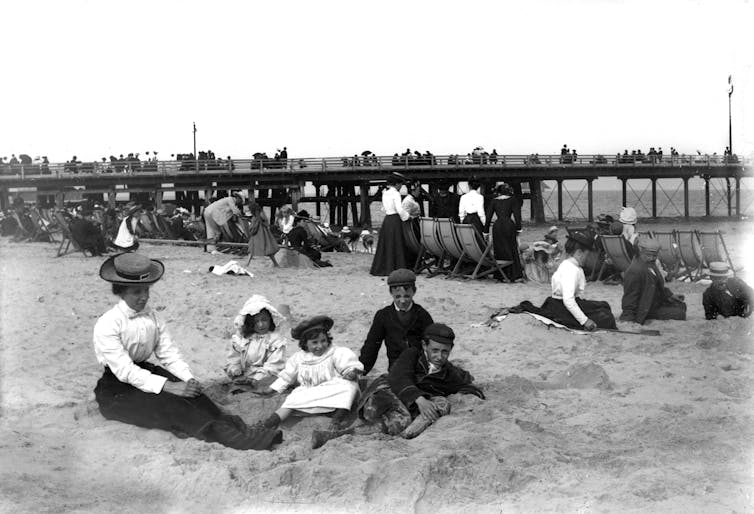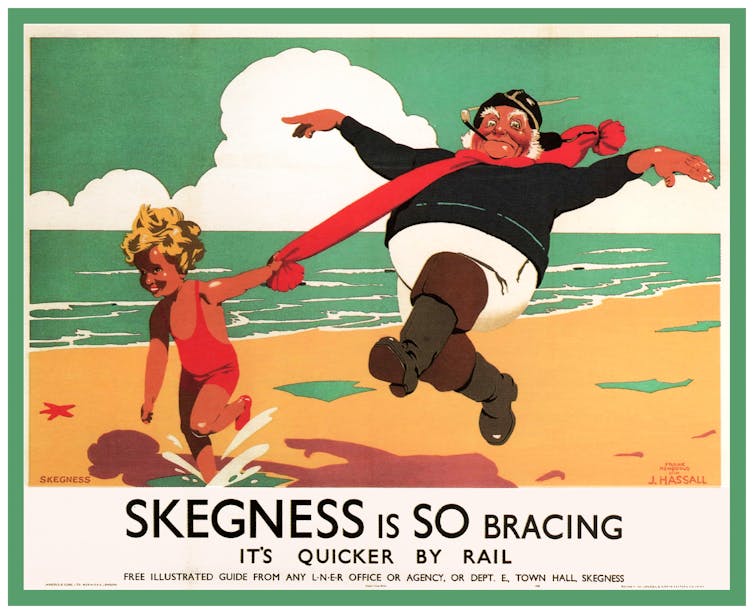How Easy Was Travel in the Victorian Era
Holidays feel like an important tonic after such a tough year. While international travel is possible, it's not exactly easy, so many are choosing to stay closer to home, opting for a "staycation". This year holidaymakers are discovering the treasures of the UK's coast and the rugged beauty of its landscapes.
Domestic tourism as we know it began in the 19th century when the idea of the holiday was just becoming popularised. Expanding railways and changing work practices meant people had more leisure time to dedicate to travelling. International travel was becoming easier but wasn't accessible to all, so the Victorians chose to spend this newfound "free" time in the UK.
This gave way to the creation of hot new holiday destinations, mostly on the UK's coast. Great British seaside towns, from Bournemouth to Brighton, enticed people with promises of fun, sea and clean air – many of the things that continue to lure people today.
The great summer holiday as we know it was conceived by the Victorians. The 19th century saw the industrial revolution and the rise of industrial capitalism, where factories were thriving and work structures were more clearly and rigorously defined and delineated. This led to the emergence of administrative professions, like clerks, and an emerging middle class.
There was more structured working time, including shift work in factories and time off on Sundays. As a result, working-class people had leisure time to use, and by the 1890s some skilled workers had half days on Saturdays, leading to the birth of the "weekend" – though this was not formalised until much later in the 20th century.
In 1871 the Bank Holidays Act was passed. This designated certain days as holidays on which banks closed, though, over the years, more businesses began observing these days off work. Before 1830, banks closed only on the 40 saints' days of the year, though by 1834 this was just four days, including Christmas day. From 1871, any day could be declared a bank holiday, not just saints' days.

These new leisure hours were used to explore the surrounding countryside and seaside as cities expanded at exponential rates. The working class took day trips and the wealthy stayed in hotels along the coast, many of which still stand today.
Travel was previously only accessible to the wealthy, but an expanding rail network meant that travel across Britain was easier, faster, cheaper and more accessible than ever before. The railway boom began in the 1840s, and by 1850, 6,000 miles of track had been laid and 18,000 by 1880. This meant that smaller towns were connected, as well as big cities.
The rise of mass print literature went hand in hand with the rise of the railway – British train station stalwart WH Smith was established to sell cheap books to train passengers, a brand new audience, as it was previously too bumpy to read on a carriage or cart.
That a greater variety of people could access the margins of the country than ever before caused a lot of anxiety among the upper classes. Poet William Wordsworth famously protested the expansion of the rail into the Lake District, the site that inspired some of his most famous poems, as he thought its beauty would be tainted and that the poor did not have the capacity to appreciate its sublimity.
There was also anxiety that the railway and encroaching tourists would spoil seemingly untouched regions. Protesters in Cornwall thought tourism would dilute the country's particular identity, language, history and culture. This is not dissimilar to anxieties about tourists buying holiday homes in Wales and Cornwall today.
Tourism is born
An emerging tourist industry meant emerging tourist boards eager to promote UK travel over increasingly accessible foreign travel. By 1870, the Great Eastern Railway was publishing advertisements for "A Day at the Seaside".

Places in the UK were sold as being somewhat exotic or foreign – Cornwall was called "the Cornish riviera" and maps of Cornwall were flipped upside down and displayed next to maps of Italy to show their similarities.
As a result, sunny seaside resorts were developed by investors – Bournemouth, Brighton, Weston-super-Mare and Blackpool, to name a few. Their influence can still be seen in finely wrought piers, promenades and pavilions of these seaside towns, which have gained renewed popularity during the COVID pandemic.
As seaside getaways became popular, many of the things we associate with the British summer holiday came to be, including deckchairs, ice-cream, donkey rides, Punch and Judy shows (violent puppet shows primarily aimed at children), rock (a hard sugar candy), and games arcades.
Ice-cream became very popular in the 19th century and was a welcome cool treat on summer beaches, as the Victorians developed icehouses (essentially deep wells) to store ice and keep it cool. Queen Victoria had her preferred clear ice imported from Massachussets, USA. Many popular ice-cream flavours might feel unfamiliar to us today, such as cucumber ice-cream.
The tourism that emerged, however, wasn't always sunshine and deckchairs – one of the first Thomas Cook holiday packages in the 19th century was a railway journey to Bodmin Jail where passengers could look out of the window to witness hangings from the comfort of their own carriage.
While a day out to see hangings or a scoop of cucumber ice-cream may not be quite up modern holiday seekers' street, many of the things that the Victorians popularised remain a huge part of a British holiday today. So, while enjoying a stick of rock or a game on the pier, spare a thought for the pioneering Victorians who made some of the best bits of your much-needed holiday possible.
wiltshiretheigners.blogspot.com
Source: https://theconversation.com/how-the-victorians-invented-the-staycation-165209
0 Response to "How Easy Was Travel in the Victorian Era"
Post a Comment